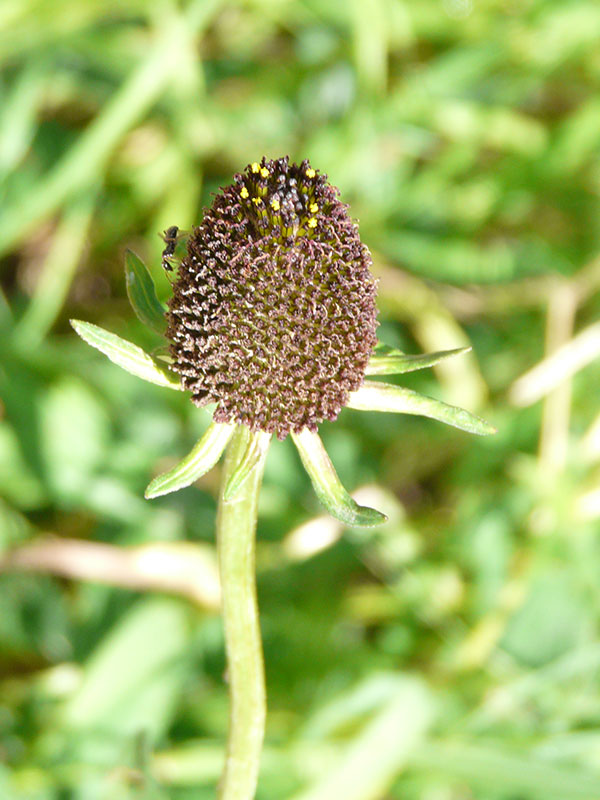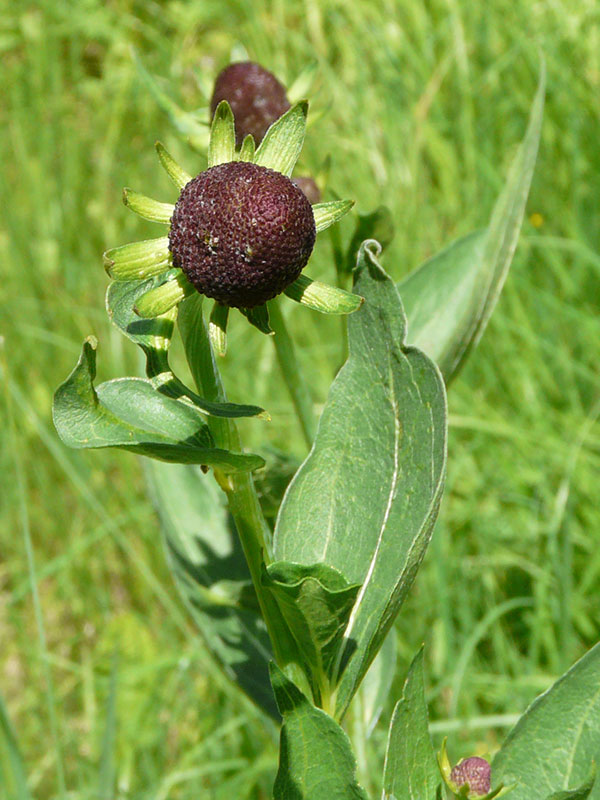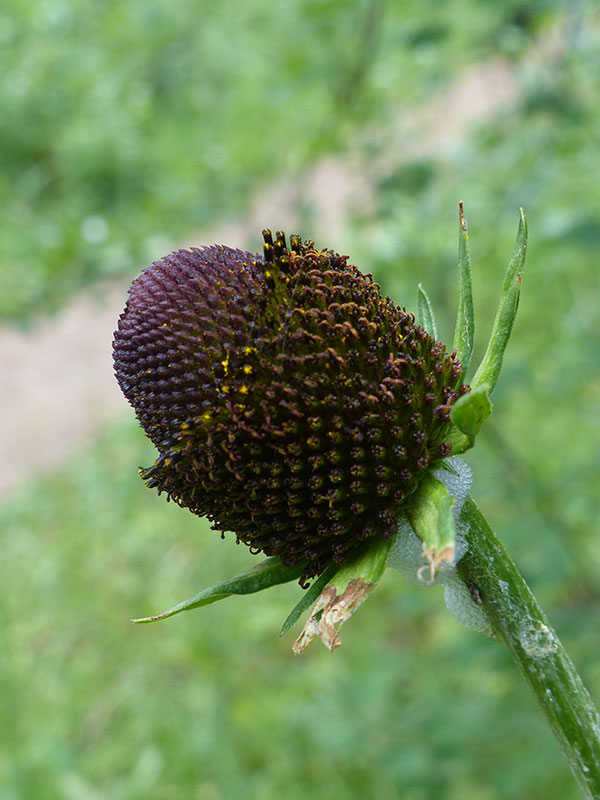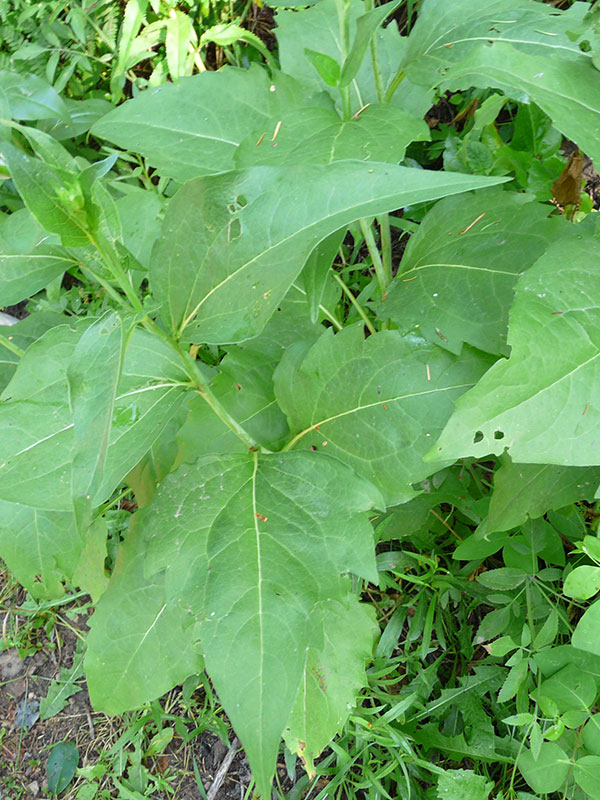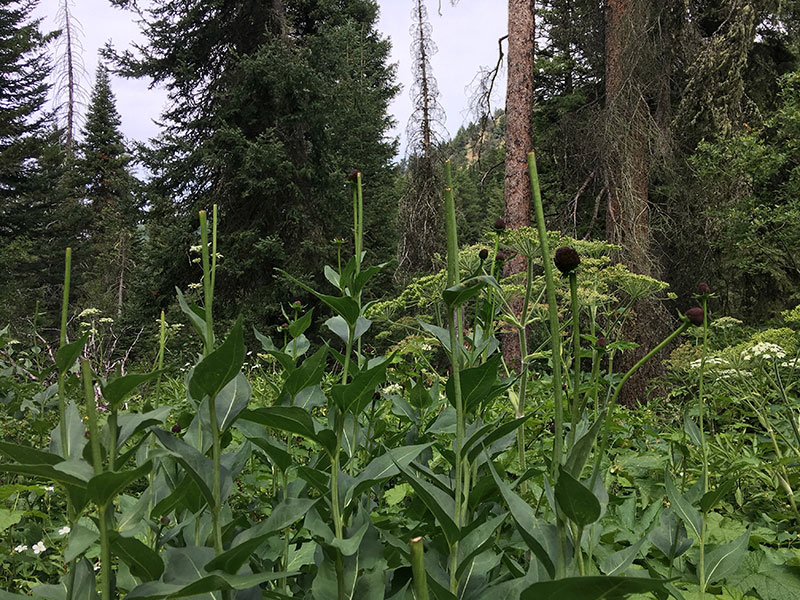Rudbeckia occidentals / western coneflower
- dark cone-shaped flower head – like a sunflower without petals
- ring of yellow “bumps” visible during pollination time
- “cones” about 1″ but double that when in seed.
- usually a tall plant with sunflower-like leaves
- alternate (not opposite) leaves
Also known as: western chocolate cone, black headed coneflower
On any number of hikes around the Valley, you are likely to run into a plant that looks a bit weird… it could be a sunflower but doesn’t have any yellow “petals” (ray flowers). Or, it could be a black-eyed Susan that lost its petals. Sometimes, there is a small ring of yellow – the stamens – sticking out of what looks like a black or brown cone. As you look around, you may also see a bunch of these plants, obviously the same thing, but with the tops eaten off cleanly. Horses seem to like them, but maybe also moose and other critters. Mention any of these things to a fellow wildflower enthusiast and they will immediately know what you are talking about, even if they don’t know the name of the plant.
Overall, this Rudbeckia is found in moist places, either by streams, or in wet meadows, or in moister gaps in the forest (as, for example, the Moose Creek trail). It is not uncommon but for some reason (maybe space) doesn’t show up in Earle or Lundin although it is in the Forest Wildflowers by Dee Stickler.
| Color | |
|---|---|
| Family | |
| Blossom size | |
| Inflorescence size | |
| Inflorescence type | |
| When? | |
| Where? |
